What is Socratic questioning?
Socratic questioning is a method of critical thinking and inquiry that involves asking a series of probing questions to explore ideas, clarify thoughts, and reach deeper understanding. In decision-making, it can be used to uncover new perspectives to get to the truth and depth of things and make more informed and thoughtful decisions. It involves asking open-ended questions to analyze the facts associated with the decision.
-
Explore complex ideas and decisions.
-
Uncover hidden issues and problems.
-
Challenge your beliefs, assumptions, and reasoning process.
-
Analyze concepts and explore different perspectives.
-
Engage in deeper reflection, critical analysis and self-examination.
Where do we use the Socratic method?
Socratic questioning can be a valuable technique in decision-making across a variety of contexts. Here are scenarios in which Socratic questioning can be particularly useful:
Complex Decisions
-
When: Faced with complex decisions that involve multiple variables, perspectives, and potential consequences.
-
Why: Socratic questioning helps break down complexity, encouraging a systematic and thorough examination of different aspects of the decision.
Uncertain Situations
-
When: Dealing with uncertainty where outcomes are unclear or information is incomplete.
-
Why: Socratic questioning can help explore potential scenarios, consider various possibilities, and guide in navigating uncertainty.
Innovation and Creativity
-
When: Seeking innovative solutions or approaches to problems.
-
Why: Socratic questioning encourages thinking beyond conventional boundaries, fostering creativity and exploration of unconventional ideas.
Team Decision-Making
-
When: Making decisions that involve multiple team members or stakeholders.
-
Why: Socratic questioning promotes collaboration, ensures that diverse perspectives are considered, and helps build consensus.
Personal Development
-
When: Making decisions related to personal growth, career choices, or life goals.
-
Why: Socratic questioning facilitates self-reflection, helping individuals clarify their values, motivations, and long-term objectives.
Learning and Training
-
When: Teaching or training individuals in decision-making skills.
-
Why: Socratic questioning can be used as a pedagogical tool to encourage critical thinking and guide learners in understanding the decision-making process.
Organizational Change
-
When: Implementing significant changes within an organization.
-
Why: Socratic questioning can help leaders and teams navigate the complexities of change, anticipate challenges, and make informed decisions.
Why should we use the Socratic method?
Socratic questioning method is a valuable approach for fostering intellectual growth, promoting thoughtful dialogue, and facilitating meaningful learning experiences. It is a valuable technique in decision-making processes for making well-informed, balanced, and responsible decisions across various domains.
Here are some of the benefits of using Socratic questioning in decision making:
Clarity of Thought
Socratic questioning encourages you to clarify your thinking and assumptions. By asking probing questions, you can gain a better understanding of the problem or decision you're facing and the factors at play.
Balanced Perspectives
Through Socratic questioning, you can explore various alternatives and potential courses of action. This helps in considering a wider range of options before making a decision for a more well-rounded and fair decision-making process.
Identification of Biases
We all have biases or preconceived notions that can influence our choices. Socratic questioning encourages you to recognize and address these biases, leading to more objective decision-making.
Reduced Impulsivity
Decision-making under pressure or in emotionally charged situations can lead to impulsive choices. Socratic questioning encourages a more deliberate and thoughtful approach, reducing the likelihood of hasty decisions.
Improved Communication
Socratic questioning can be used in group decision-making settings to facilitate productive discussions. It encourages participants to listen to each other's viewpoints and engage in constructive dialogue. It can help build consensus by addressing concerns, clarifying misunderstandings, and finding common ground among participants.
Adaptability
Socratic questioning allows you to adapt to changing circumstances or new information. You can revisit your decisions and adjust their course of action as needed based on ongoing questioning and reflection.
Enhanced Learning
Decision-making processes that incorporate Socratic questioning become learning experiences. You and your teams can gain valuable insights from the process itself, which can be applied to future decisions.
Risk Mitigation
Through systematic questioning, you can identify and assess potential risks associated with different choices, leading to more risk-informed decision-making.
Long-Term Impact
Socratic questioning encourages a long-term perspective by considering the consequences and sustainability of decisions over time, rather than just short-term gains.
Empowerment
Decision-makers who engage in Socratic questioning feel empowered because they are actively involved in the decision-making process. This can boost confidence and morale and lead to a greater sense of responsibility and accountability for the outcomes.
How to apply Socratic method to decision-making?
The Socratic questioning method for decision-making involves a series of steps, each accompanied by a set of questions designed to guide critical thinking, explore assumptions, and arrive at a well-considered decision. By asking questions at each step, individuals and teams can arrive at more informed and thoughtful decisions.
Here are the different steps in the Socratic questioning method, along with the questions to ask at every step:
Step 1: Seek clarification
Begin by clearly defining the decision or problem you are facing.
-
What exactly is the issue or decision being faced?
-
What are the key facts and information relevant to this decision?
-
What do we hope to achieve from this decision?
-
How does this decision align with long-term goals and values?
-
Why is this decision a priority right now?
Step 2: Understand the belief and it's origin
Identify cognitive biases and other thinking errors that influence decision-making.
-
What’s the current thinking?
-
What's making us think this way?
-
What beliefs, emotions or biases might be influencing this perspective?
Step 3: Challenge assumptions
Recognize and articulate any assumptions you might be making about the situation.
-
What assumptions are being made?
-
How do these assumptions affect the decision?
-
How do we know that these assumptions are accurate?
-
What will happen if these assumptions are wrong?
Step 4: Backup through evidence
Gather evidence that supports or contradicts the decision.
-
What evidence supports the current perspective?
-
How reliable and credible is the evidence?
-
How can we validate the evidence?
-
Are there any gaps or contradictions in the evidence?
-
Do we have all the information we need?
Step 5: Consider alternate viewpoints
Consider different viewpoints and perspectives related to the decision.
-
What do others think of this decision?
-
What are the counter arguments of people with a different viewpoint?
-
What other options, solutions or alternative viewpoints have been considered?
Step 6: Explore implications and consequences
Examine the potential outcomes and consequences of your decision.
-
If we proceed with this decision, what are the potential outcomes?
-
What will happen if this decision is wrong?
-
What might be the unintended consequences of this choice?
-
How does this decision affect others?
-
What are the short-term and long-term consequences of this decision?
Step 7: Avoid analysis paralysis
Make the decision at the right time by avoiding overthinking and over-analyzing.
-
Is it a reversible or irreversible decision?
-
Is there a specific timeline or urgency associated with this decision?
-
Would waiting or delaying the decision provide more information?
-
What's the cost of not taking action?
Step 8: Put it into action
Outline the steps and actions required to implement the decision.
-
How feasible is the implementation of this decision?
-
What steps need to be taken to put the decision into action?
-
What resources or support might be required to make this decision work?
-
Who is responsible for each step?
Step 9: Learn through self-reflection
After implementing the decision, reflect on the results and lessons learned.
-
What were the outcomes of the decision?
-
Were the intended goals achieved?
-
What did I learn from this decision-making process that can be applied to future decisions?
-
How has my thinking evolved or changed?
-
Am I more confident in my decision-making skills now than when I started?
This Socratic Questioning Method product provides worksheets to implement these steps in your decision-making process thereby enabling you to make more effective decisions. It also provides several Mind Map templates for you to brainstorm through ideas and reach better conclusions.
For improving thinking skills, also see Cognitive Distortions Bundle and Mind Map Templates.
What are examples of Socratic questions?
Here are two examples of applying Socratic method to decision-making process by asking questions at different stages of the Socratic method.
Example 1: Socratic Questioning Method
Decision Scenario: Decide on a new software vendor for the company
Step 1: Seek clarification
-
What decision do we need to make regarding the software vendor?
-
What requirements or problems we aim to address with a new vendor?
-
What outcomes do we expect to achieve by selecting a new vendor?
Step 2: Understand the belief and it's origin
-
What's the current thinking process on this decision?
-
What beliefs, emotions or biases might be influencing our decision on vendor change?
Step 3: Challenge assumptions
-
What assumptions are we making about the capabilities of the current vendor?
-
Are there any assumptions about budget constraints or timeframes that need to be examined?
-
How might these assumptions influence our perception of potential vendors?
Step 4: Backup through evidence
-
What information do we currently have about the current vendor and potential new vendors?
-
How reliable are the sources of information we're relying on?
Step 5: Consider alternate viewpoints
-
Whose perspectives should we consider in making this decision?
-
How might the IT department's perspective differ from that of the finance team?
-
In what ways could the end-users' experience impact our decision?
-
What additional data or facts would be useful for making an informed choice?
-
What alternative software vendors could potentially meet our needs?
-
How might we approach this decision if budget constraints were not an issue?
-
Are there creative solutions or partnerships we haven't explored?
Step 6: Explore implications and consequences
-
What are the potential consequences of continuing with the current vendor?
-
How might transitioning to a new vendor impact the company's operations in the short-term and long-term?
-
What are the risks associated with sticking with the current vendor, and what benefits might there be?
-
What risks and benefits are associated with selecting a new vendor?
-
How can we balance these risks and benefits to make a well-informed decision?
Step 7: Avoid analysis paralysis
-
By when this decision need to be made and why?
-
What's the cost of continuing with the current vendor for too long?
Step 8: Put it into action
-
What specific steps do we need to take to transition to the new vendor?
-
Who is responsible for each step, and what resources are required?
-
How can we monitor and evaluate the effectiveness of our actions?
Step 9: Learn through self-reflection
-
What can we learn from the decision-making process regarding software vendors?
-
How might we apply these insights to improve future decisions in the realm of technology procurement?
-
Are there areas where we could have employed Socratic questioning more effectively in this scenario?
Example 2: Socratic Questioning Method
Decision scenario: Should you invest in developing a new mobile app?
Step 1: Seek clarification
-
What is the specific decision we need to make regarding the new mobile app?
-
What are the key objectives and expected outcomes of this decision?
Step 2: Understand the belief and it's origin
-
What's the current view on developing a new mobile app?
-
What beliefs, emotions or biases might be influencing our decision regarding this app?
Step 3: Challenge assumptions
-
What assumptions are we making about the demand for a new mobile app in our target market?
-
How can we validate these assumptions before making a decision?
Step 4: Backup through evidence
-
What market research and data do we currently have about customer preferences and competitors' offerings in the app market?
-
How reliable is the data we're relying on?
Step 5: Consider alternate viewpoints
-
Whose perspectives should we consider when assessing the potential success of the new app?
-
How might customers, competitors, and internal stakeholders view this decision differently?
-
What additional information or research is required to make an informed decision?
-
What alternative approaches to achieving our objectives can we consider besides developing a mobile app?
-
How might partnerships, enhancements to existing products, or other strategies serve our goals?
Step 6: Explore implications and consequences
-
What are the potential consequences of investing in the new mobile app, both positive and negative?
-
How might this decision impact our brand, revenue, and customer engagement?
-
What are the risks associated with developing and launching the app, such as development costs and market competition?
-
What benefits, such as increased customer engagement or revenue growth, do we expect to realize?
Step 7: Avoid analysis paralysis
-
By when this decision need to be made and why?
-
What's the cost of not making this decision within the expected timeline?
Step 8: Put it into action
-
What specific steps do we need to take to initiate and execute the development of the mobile app?
-
Who is responsible for each aspect of the project, and what resources are required?
Step 9: Learn through self-reflection
-
What lessons can we draw from this decision-making process that might inform future product development efforts?
-
How can we continuously monitor the progress of the app development and adapt our strategy based on user feedback and market dynamics?

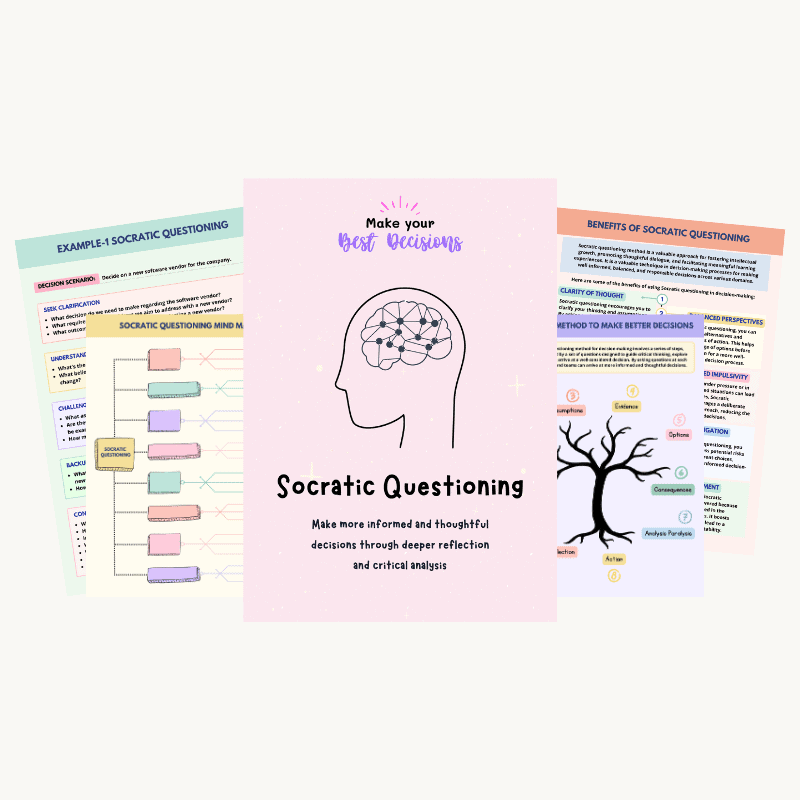
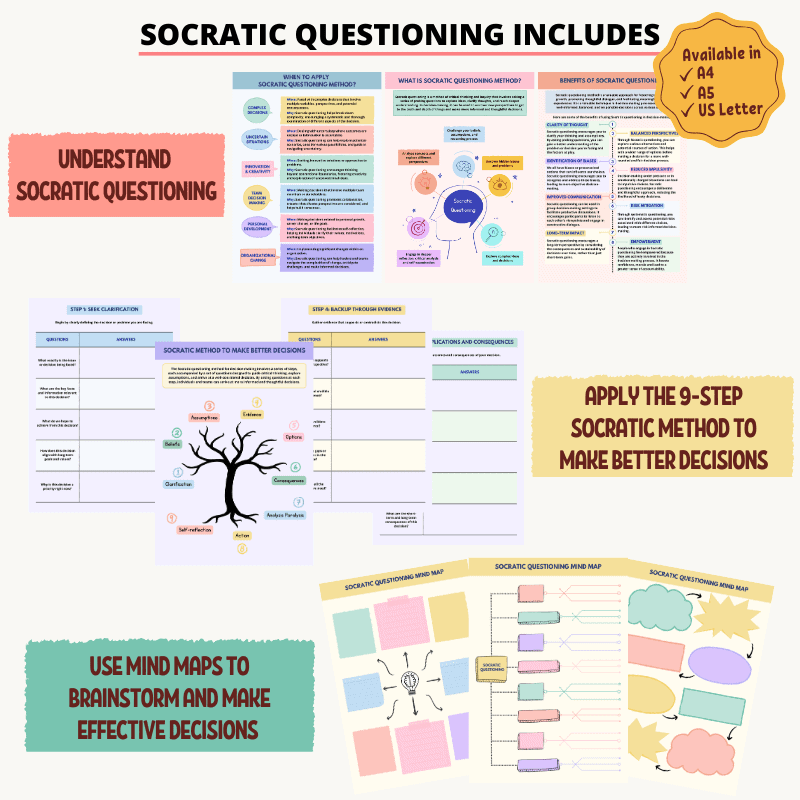
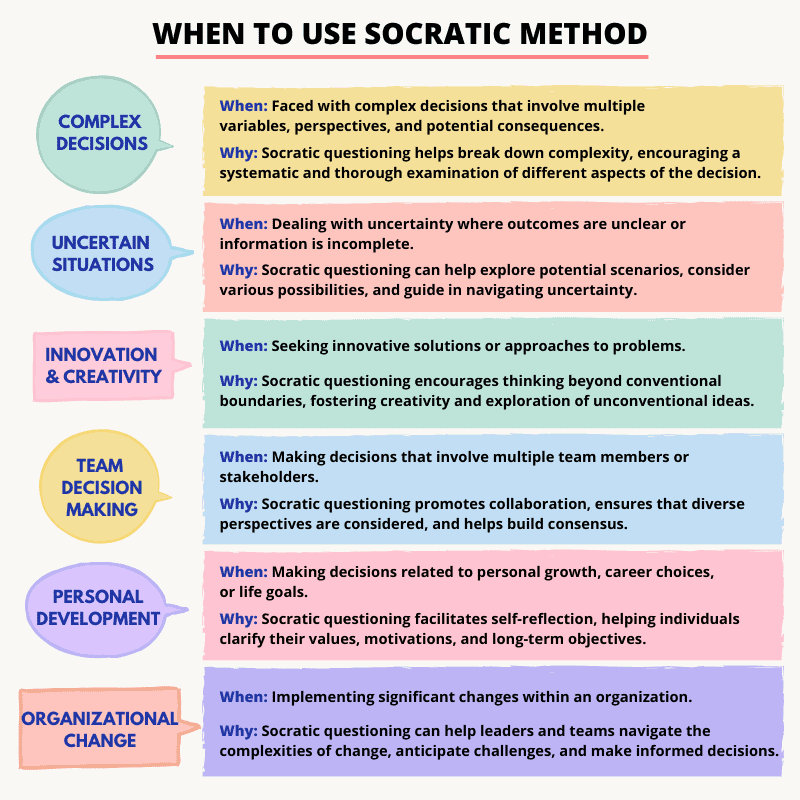
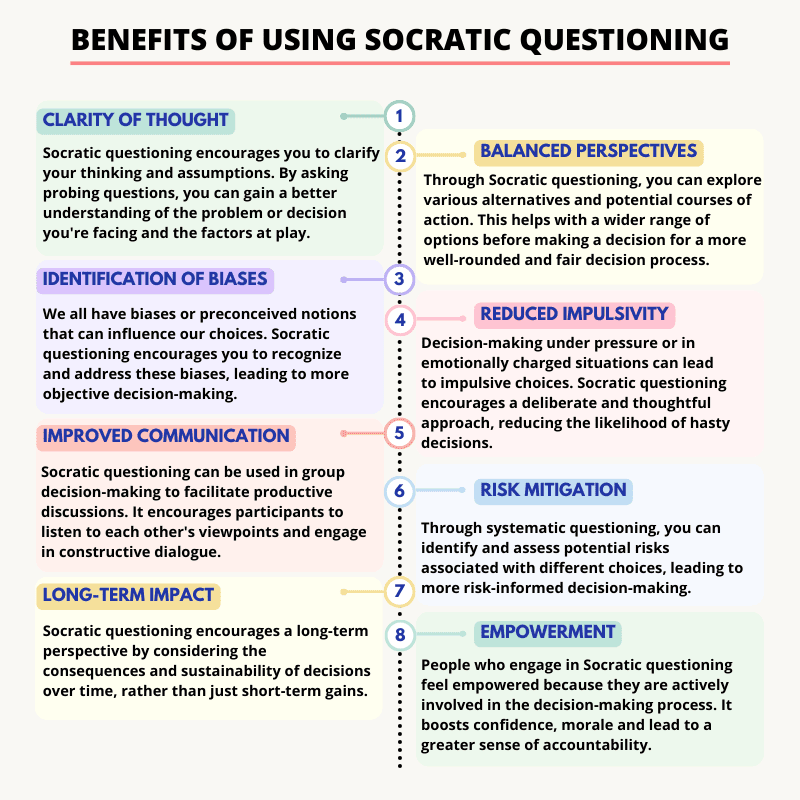
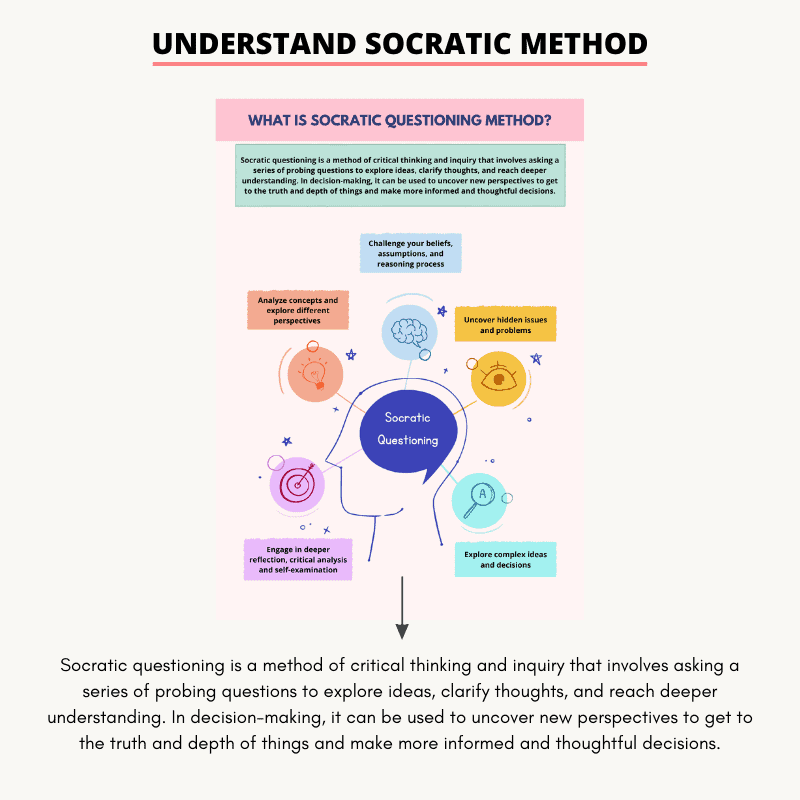
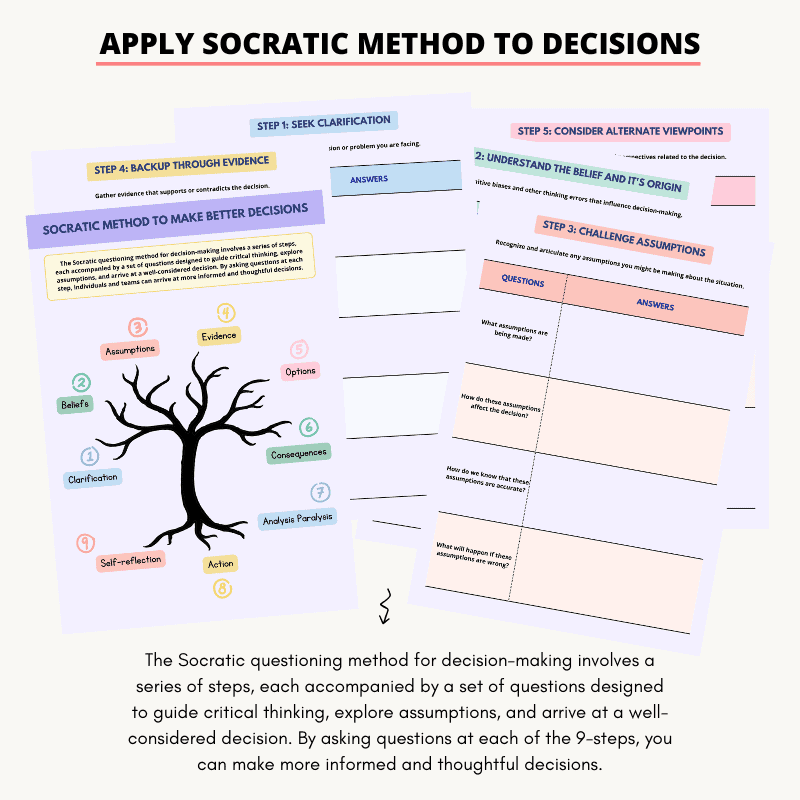
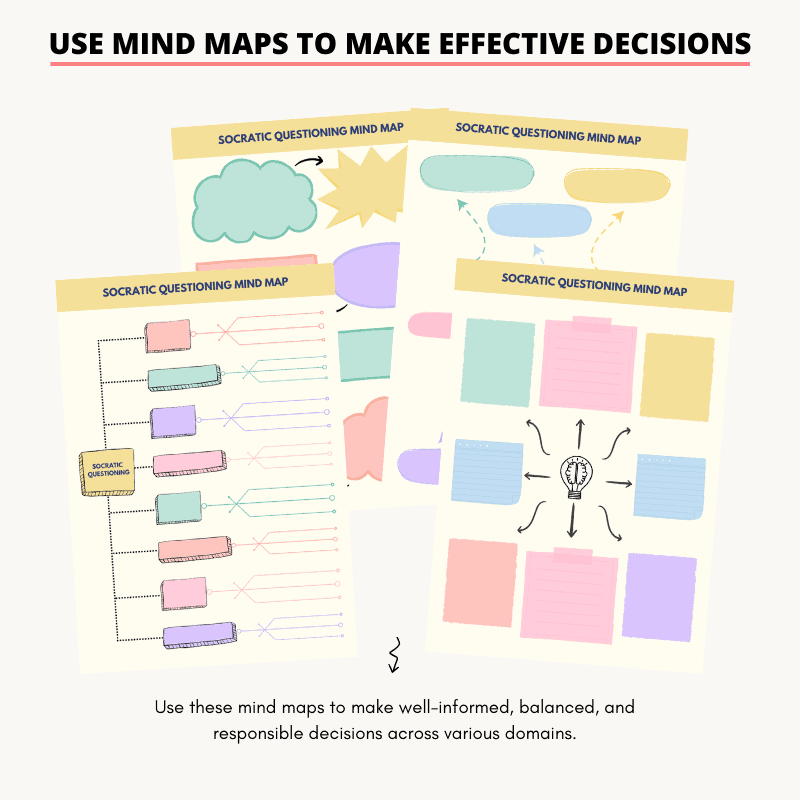
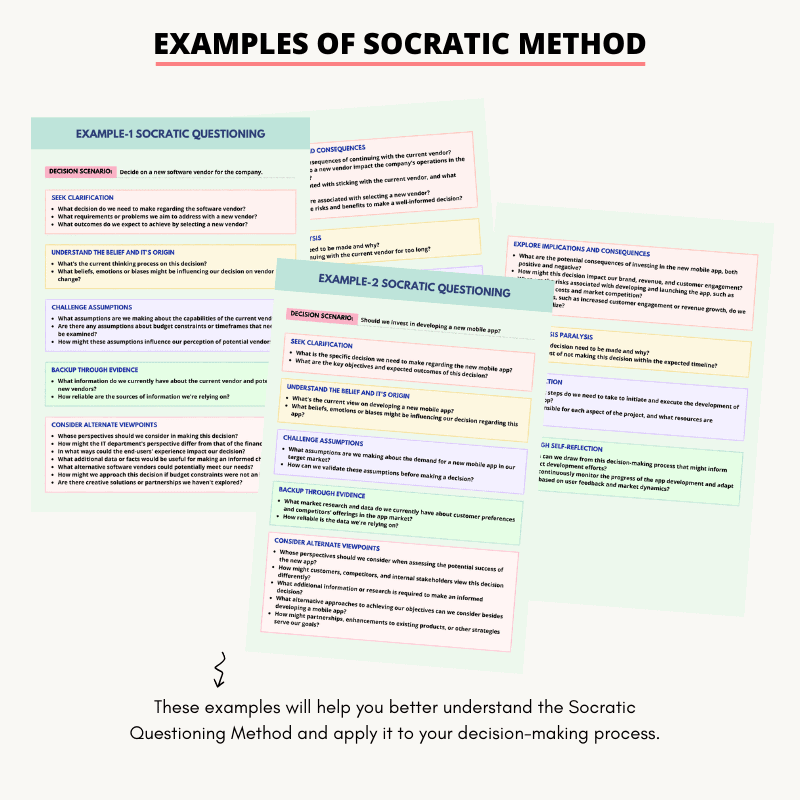
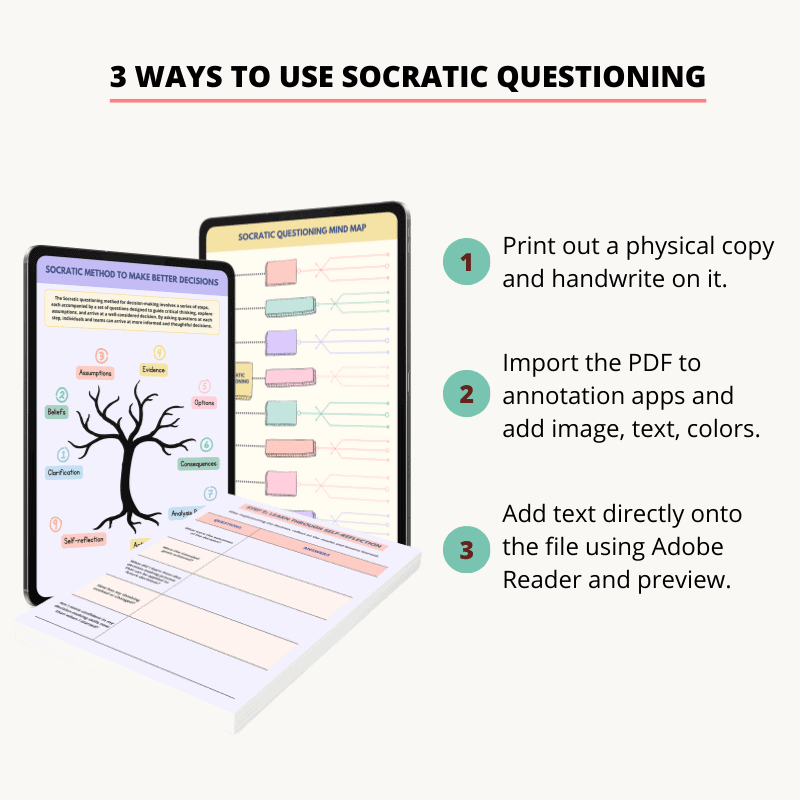
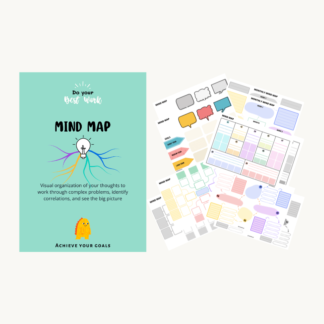
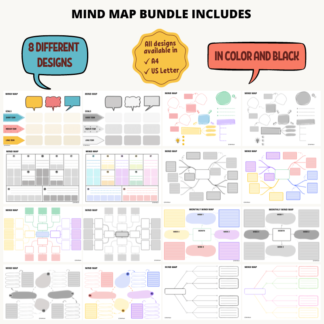
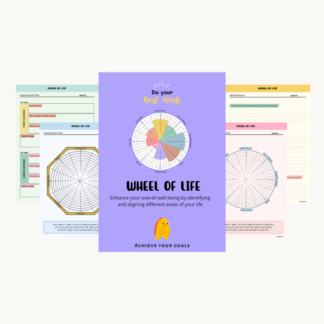
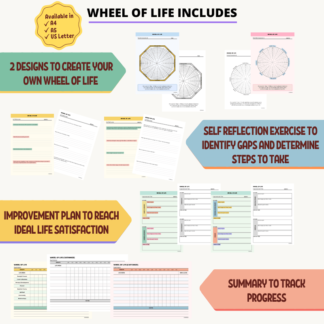
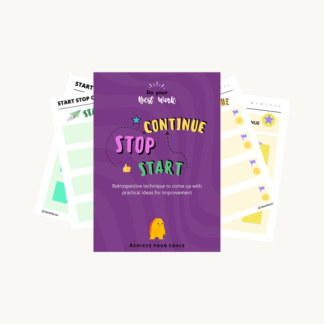
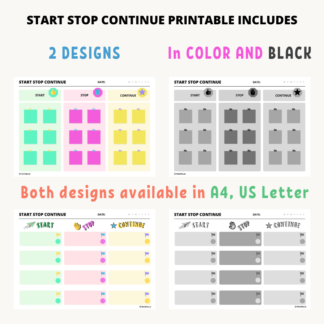
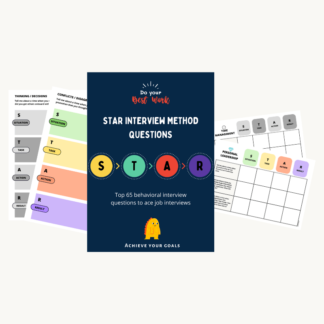
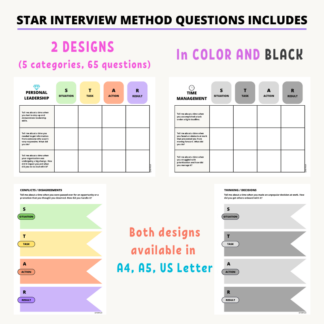
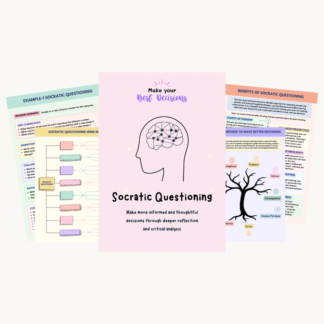
Reviews
There are no reviews yet.